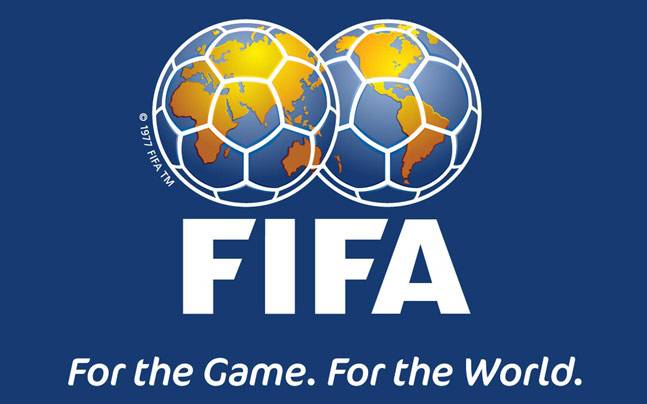Part 1 of a 3-part special on Africa’s participation at the FIFA World Cup.
The first African team to play at the World Cup was Egypt at the 1934 tournament in Italy. They were duly defeated 4-2 by Hungary in the first round and went home. They didn’t stand on ceremony in those days, no Sirree. There were no group stages or dead rubbers, the entire 16 team tournament was played on a knockout basis from the get go! One defeat and off you went.
It took an improbable 36 years before the next team from the continent made it to the World Cup finals. This interregnum could be put down to colonialism, the belated introduction of the game to many parts of the newly independent continent, especially south of the Sahara, and the interruption occasioned by World War II. 1966, however, was a real turning point.
Africa’s absence from that tourney was occasioned by a revolt against FIFA, then led by the aloof Englishman, Sir Stanley Rous. African countries boycotted the qualifiers because FIFA had only offered one place, to be contested via playoffs, to three continents, namely: Africa, Asia and Oceania. Given the post-colonial sentiment sweeping the continent at this time, this was considered an outrage by the newly independent African nations and they duly boycotted the qualifiers. This act of rebellion foreshadowed the coup that would topple the unpopular (at least in Third World circles) Sir Stanley as head of FIFA almost a decade later. But that is a story for another time.

Morocco’s excursion to Mexico in 1970 was fairly unremarkable though they did manage to record Africa’s first point in the World Cup proper via a 1-1 draw with Bulgaria in their final group match, having earlier lost to West Germany and Peru. Their humdrum but credible debut was soon overshadowed in the football world’s imagination by Zaire’s (now DRC) catastrophic first, and thus far, only, World Cup appearance during the 1974 tournament in Germany.
Playing in Group 2 with holders Brazil, Scotland and Yugoslavia, Zaire conceded a total of 14 goals while scoring exactly none. The 9-0 loss to Yugoslavia in their second match represented a nadir, not just for their ill-fated campaign, but for the entire history of the continent’s participation in football’s marquee event. The fact that Zaire’s coach was actually from Yugoslavia only added grist to the rumour mill.
Suffice it to say that a thousand clichés about “enthusiastic” but “poorly organised” African teams were born that night in Gelsernkirchen. They remain with us today. No wonder Mobutu Sese Seko Kuku Ngbendu Wa Za Banga – to give him his full title – took a dim view of the whole affair. But that, again, is a sad story for another day.
Zaire’s haplessness was particularly galling as they were the first team from south of the Sahara to reach the World Cup. Indeed, Africa’s early participation in the World Cup was dominated by North African teams. Including the 1986 World Cup, six of the first eight African qualifiers for the tournament were from North Africa.
Tunisia, aided by Godwin Odiye’s infamous own goal at National Stadium in Surulere, recorded the continent’s first win with their 3-1 triumph over Mexico in Argentina ’78. They also managed a fantastic 0-0 draw against the defending champions West Germany but were undone by the 1-0 defeat to Poland in the final group game
Algeria went one better in 1982 when they, astonishingly, defeated West Germany 2-1 in Gijon before beating Chile 3-2. Sandwiched in between these two notable results was a 2-0 loss to Austria that, along with the shameful collusion between the European neighbours in their final group game, meant that Algeria still failed to progress to the second round despite amassing four points out of a possible six. Algeria’s goals against the Germans were scored by Rabah Madjer and Lakhdar Belloumi, two majestic footballers whose names struck fear into the hearts of Nigerians everywhere throughout the ’80s.
For proper context, it is worth remembering that West Germany were the reigning European champions at this time and would go on to lose in the final of the tournament to Italy. Algeria’s win, up to that point, was probably the biggest shock in the history of the tournament.
Cameroon also debuted in Espana 82, thanks to the increase in Africa’s places to two teams in an expanded 24 team tournament, and, playing in their characteristic disciplined and physical manner, performed superbly in drawing with Peru, Poland and eventual winners Italy. Against the Italians, Gregoire M’bida responded instantly to Coco Graziani’s 60th minute header.
Like Algeria though, Cameroon failed to qualify for the second group stage, as it was then. Statistically speaking though, on a points per game basis, 1982 remains Africa’s most “successful” World Cup outing.
Eventually, it fell to Morocco to break Africa’s duck by qualifying for the second round from the aptly named “Group of Sleep” in 1986 having drawn 0-0 with both Poland and England before breaking out and stunning Portugal 3-1 in the final group game with a brace from Abderrazak Khairi and another strike from Merry Krimau.
Their eventual 1-0 extra time loss to West Germany in the second round was, in its sheer drudgery, much more in keeping with most of their performances at the tournament but they had made history nevertheless. They were only the second team, after 1966’s North Korea, from outside the traditional powerhouse continents of Europe and South America ever to progress beyond the first round at the World Cup.
Algeria also qualified again in 1986 but were flat and only had a 1-1 draw with Northern Ireland and the heroics of their keeper Nacer Drid in their 1-0 loss to Brazil to show for their efforts.
1990 in Italy represented something of a watershed in Africa’s participation in the World Cup. Cameroon and Egypt qualified and, while the Pharaohs performed credibly in drawing with the Republic Of Ireland and the Netherlands before losing, narrowly, to England, it was Cameroon that grabbed all the headlines.
From the moment Francois Omam-Biyik, in defiance of Diego Maradona’s jaw-dropping shoulder keepie-uppies during the warm-up, soared to head powerfully downwards past Nery Pumpido in the Argentine goal in the opener against the defending champions, they captured the world’s imagination and were easily the highlight of what turned out to be a dreadful tournament.
However, Cameroon’s star attraction was not the young star Omam Biyik but their ageless substitute Roger Milla (ostensibly 38 yrs old at this point but who really knew?) with his logic defying cameos off the bench. Milla came on to score two against Romania in Cameroon’s 2-1 win in their second game before repeating the trick in the second round win against Colombia, which allowed Cameroon to go one better than Morocco’s second round feat of four years earlier.
By the time the Indomitable Lions lost 3-2 in the last eight against England having been 2-1 ahead deep into the second half, Milla’s irrepressible corner flag hip wiggle celebration had become the symbol of all that was good about Italia ’90.
By Akin Dawodu (Twitter @alimustapha)









